Khobz is a yeasted bread made with wheat or bread flour. It is more commonly made as a thick flatbread that is dense with a crusty exterior. This is a simple no-knead bread that is used in place of cutlery in Morocco to dip or scoop entrées or salads. I have shaped them into individual buns and topped them with sesame seeds and sliced olives.
One of the most common traits I have come across in my travels is how names change slightly as food travels across the world. Khubz in standard Arabic means bread and just as brioche is different from challah, it is no surprise that there are as many variations of Khobz as there are Arab-speaking nations.
My first taste of the traditional Moroccan Khobz came during a visit to the Ourika Valley at the foothills of the Atlas Mountains. About an hour from Marrakech, the valley provides picturesque, dramatic, and refreshing relief from the dusty Moroccan plains or the crowded souks and bazaars of Marrakech.
Seated by terraced copse overlooking the Ourika river for which the valley is named, I had my first Khobz bread topped with honey. I was pleasantly surprised because I expected the crusty and rustic bread to be coarse on the inside. It was coarse on the inside but it was also fluffy. After the first bite, I was an instant fan. My husband who prefers savories to sweets was busy using his khobz to scoop into soft cream cheese drizzled with olive oil. Our Berber hosts were obviously used to tourists, so we spent a happy hour in the refreshing shade chatting with them (through our interpreter) and partaking of this delicious bread. We were talking about the beautiful vistas when they commented that had we visited in March and April, we would have seen the cherry and almond blossoms. I, for one, was completely surprised that cherries and almonds grew there.
Khobz is one of the more versatile styles of Moroccan bread. Most dishes are eaten by hand, using the thumb, the middle and the forefinger of the right hand only. Berbers have at least 10 varieties of bread. They believe that bread and olive oil boosts one’s strength for good health and is consumed for breakfast and other meals. I was told that many families have their own recipes and in some neighborhoods, families drop their loaves off with the local baker who bakes them in a huge woodfired oven (just like pizza or naan). The families pick them up later in the day to eat. What a wonderful way to build community!
Variations:
While the traditional Khobz is made using plain flour or even whole wheat, there are variations of the theme that include semolina, barley, or just about any variety of flour. There are 2 key elements here:
- The flour must have a high gluten content. So, this is not one of the gluten free breads. Over the years, I have made Khobz with rye, all-purpose, bread flour, durum, cornmeal, and even buckwheat.
- The traditional Moroccan khobz loaf is about 3 inches thick. It is not a traditional Arab flatbread like the pita and lavash.
While the flavor profiles and textures differ between the different types of wheat, the thickness of the khobz allows it to efficiently soak up soups and dips. It is also important because in addition to soups and dips, Khobz can also be used as accompaniment to tagines and stews. The malleability of the bread’s flavor serves as a wonderful accompaniment to the spices and flavors of salads and meats.
But that’s not all. Please don’t think of the khobz as a lunch and dinner bread. Its versatility defies belief. I have served it with all meals, from breakfast to supper, and I continue to be surprised by it. I have had it with honey and ‘amlou’ for breakfast, stuffed it with roasted vegetables and meats for lunch, served it with herbs or sweet cheese for tea, and topped it with roast meats and stews for dinner. I am still experimenting with khobz, and I do not think that I am done. This recipe is based on the method and ingredients that the Berbers shared with us during our visit. I modified their recipe to include melted butter, wheat flour and topped my buns with sliced olives.
That said, khobz also replaces cutlery. Now before you begin thinking of savory accompaniments, I urge you to consider serving it with a rich goat cheese for a mid-morning snack. You’ll think that you’re in some Mediterranean retreat basking in the sun, shaded by trees, sitting by a babbling brook and cooled by a breeze.
Other toppings:
- wheat bran
- herbs
- soft cheese
- honey
- nigella seeds
- za’atar seasoning
- flax seeds
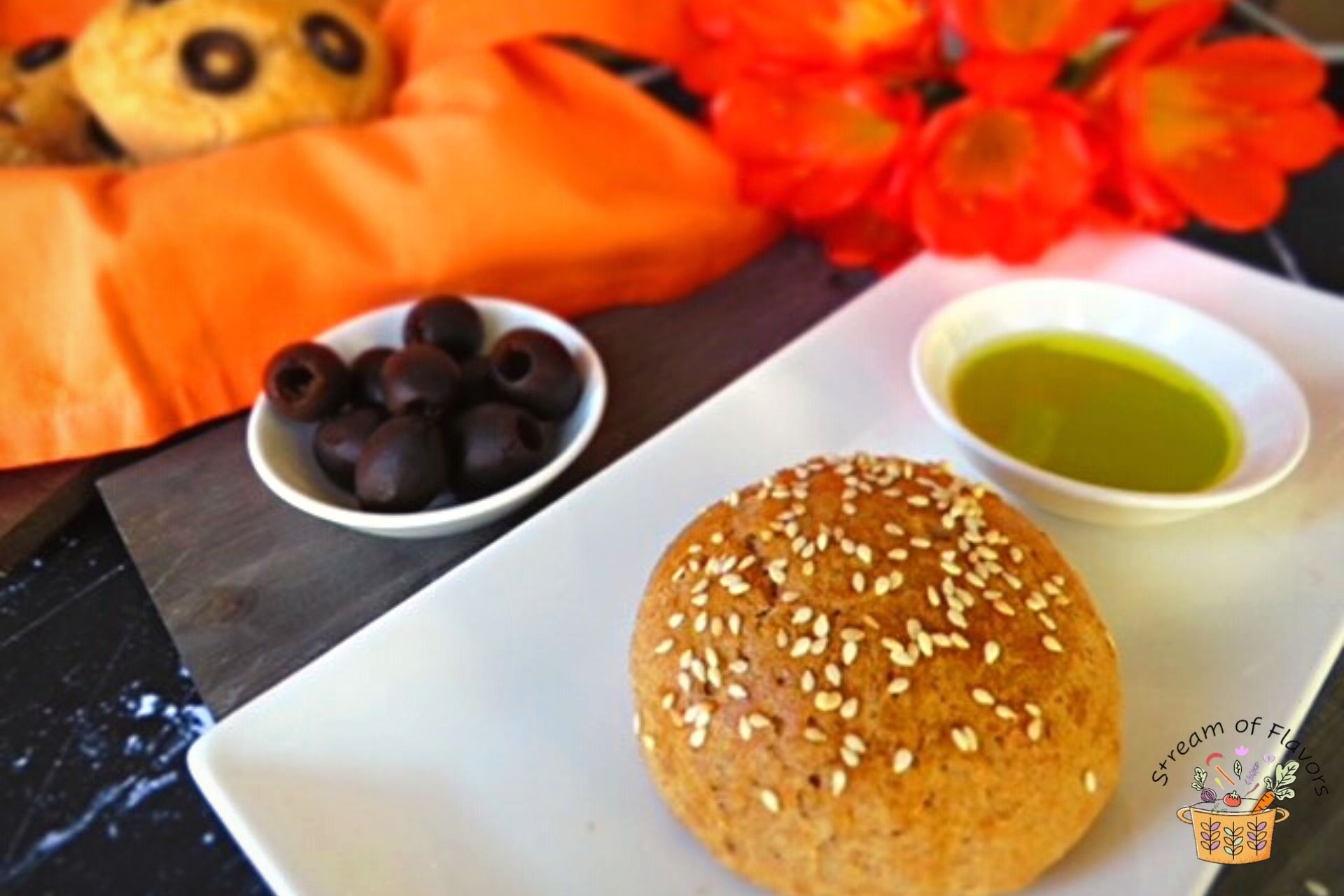
How to make Khobz:
- Mix sugar and yeast and add to warm water (temperature of the water must be between 85 -100 degrees F) and stir well. The yeast mixture will become frothy in five minutes.
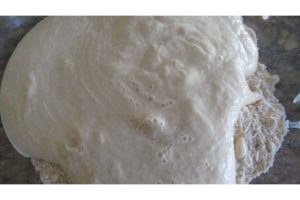
2. Add the frothy yeast mixture and the beaten egg to the wheat flour sifted with salt. Use the stand mixer to make a dough or mix by hand until combined.
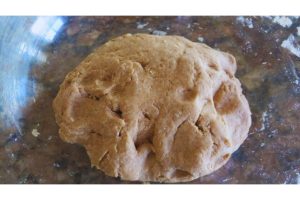
3. Drizzle the melted butter on top and just mix quickly until combined without kneading.
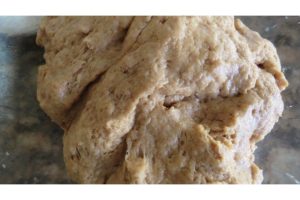
4. Divide the dough into 8 balls and place them on a baking sheet dusted with half a teaspoon of flour. Cover with a damp cloth or tea towel and let them rest for 35 minutes.
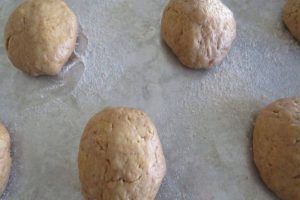
5. Flatten the buns to desired thickness. Brush with beaten egg yolk and sprinkle sesame seeds on top of 4 buns. Top the other 4 buns with sliced olives.
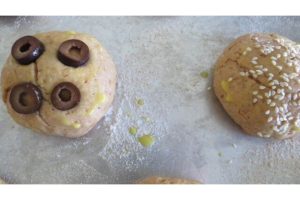
6. Bake the Khobz buns for 20 minutes.
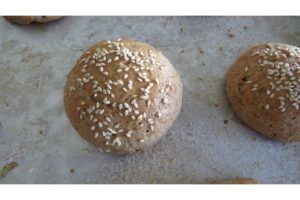
1. Bread flour or all-purpose flour will yield lighter and fluffier buns than wheat flour. Buckwheat and rye flour yields denser Khobz bread.
2. You can substitute melted butter with extra virgin olive oil that is more commonly used. The combination of olive oil with bread flour yields a lighter bread.
3. You could add some milk with water and some sugar and this will become a sweet bread.
4. I have shaped the Khobz into individual buns. They are most commonly available as a flatbread or sometimes as a loaf.
5. Adding a tablespoon of semolina to the flour gives it a coarser texture.
Storage:
You could make the dough ahead of time and freeze it in an airtight container for three months. Freshly baked Khobz will stay fresh for two days at room temperature and can be refrigerated for 2-3 days in airtight containers.
Khobz
Equipment
- stand mixer or by hand
Ingredients
- ¾ oz yeast
- ¼ pint water warm
- ½ tsp sugar granulated
- 2¼ oz butter unsalted, melted
- 1⅕ lb wheat flour
- ⅓ tsp salt
- 1 egg beaten
- 1 egg yolk for brushing
- 1 tsp sesame seeds
- 6 olive sliced
Instructions
- Preheat the oven to 400 degrees F. Mix sugar and yeast and add to warm water (temperature of the water must be between 85 -100 degrees F) and stir well. The yeast mixture will become frothy in five minutes.
- Add the frothy yeast mixture and the beaten egg to the wheat flour sifted with salt. Use the stand mixer to make a dough or mix by hand until combined.
- Drizzle the melted butter on top and just mix quickly until combined without kneading.
- Divide the dough into 8 balls and place them on a baking sheet dusted with half a teaspoon of flour. Cover with a damp cloth or tea towel and let them rest for 35 minutes.
- Flatten the buns to desired thickness. Brush with beaten egg yolk and sprinkle sesame seeds on top of 4 buns. top the other 4 buns with sliced olives.
- Bake the Khobz buns for 20 minutes.
Notes
- The texture of the dough will feel rubbery if you use wheat flour. The buns will turn out slightly crusty on the outside and coarse on the inside. If you use all-purpose flour or bread flour, then the dough will have a soft texture.
Nutrition


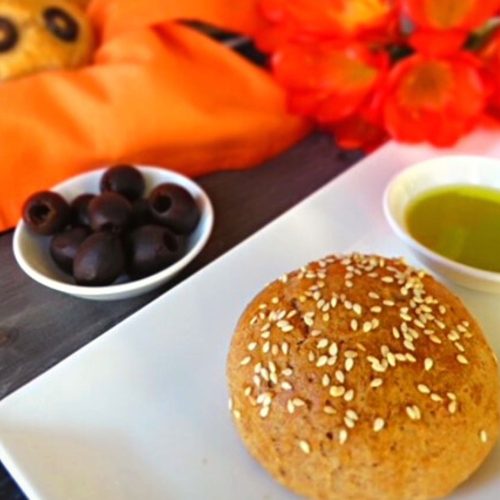
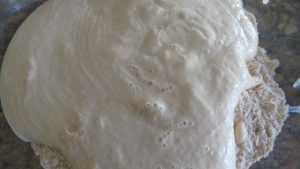
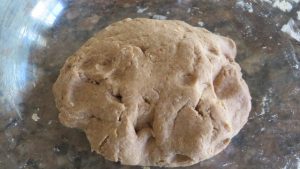
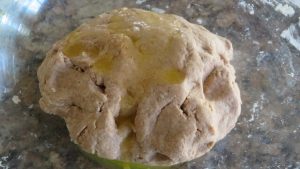
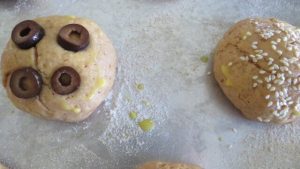
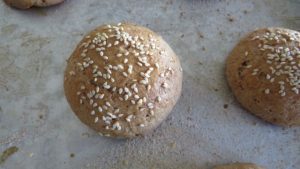





















0 Comments